Living it up
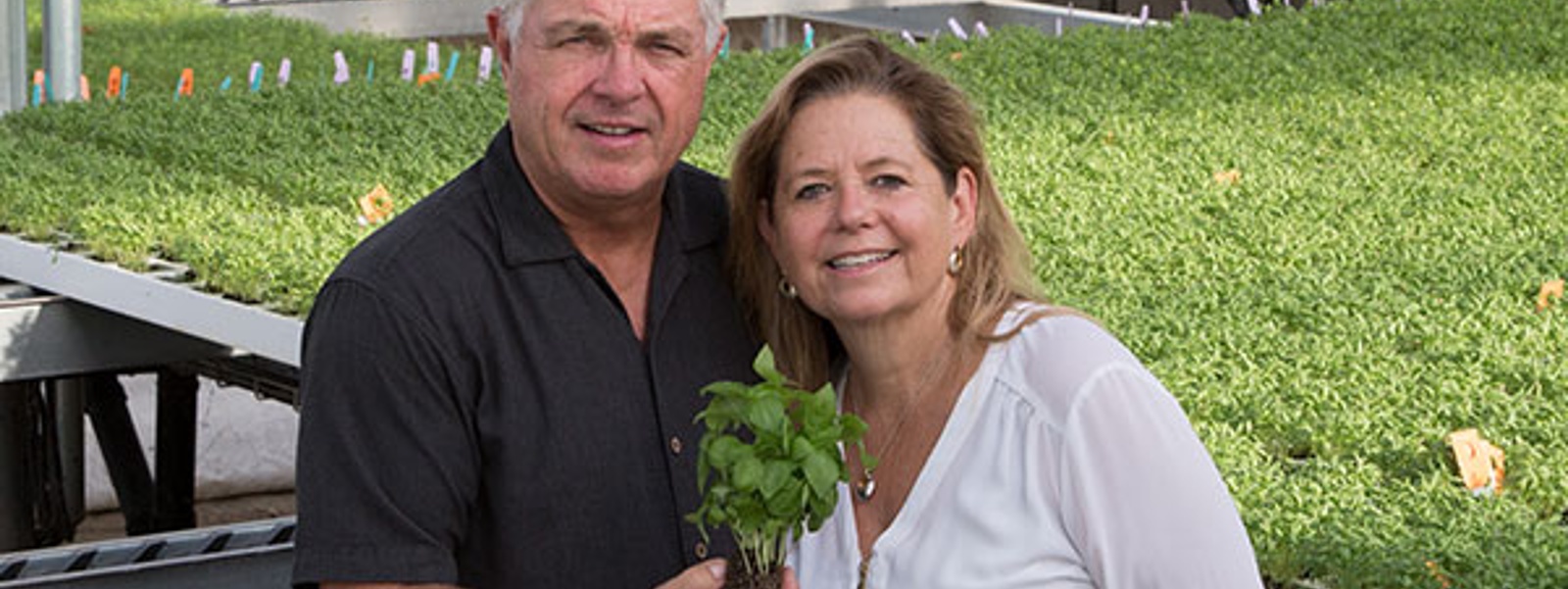
January/February 2024 California Bountiful magazine
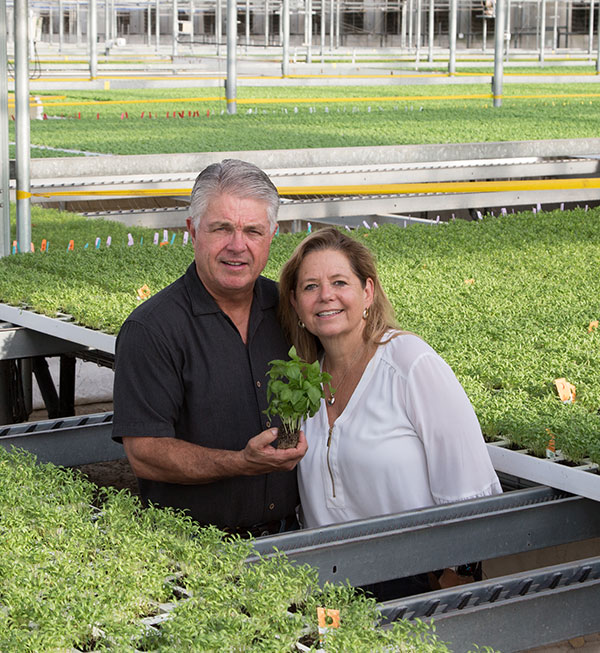
Coachella Valley family’s fresh herbs have staying power
Story by Cyndee Fontana-Ott
Photos by Melissa Jewel
Nearly 30 years ago, Suzette Overgaag stared at fast-fading herbs from the grocery store and decided there should be a better option.
So she and her husband, Leo, created one. Their North Shore Greenhouses, more familiarly known as North Shore Living, is now a thriving business in the Coachella Valley that grows and sells living herbs and greens. Cultivated largely in two big, automated greenhouses, the roughly 20 different varieties are sold with attached roots in pots and/or clamshell packaging.
“It smells fresher, it tastes fresher and it looks fresher,” Suzette says. “When you look at the difference between cut and bunched and living, it’s a different product completely.”
Shoppers seem to agree. From humble exploratory beginnings in a small greenhouse, North Shore has evolved into more than 10 acres of hydroponically grown greenhouse space and more than 130 employees.
North Shore’s primary business is young, tender herbs such as basil, thyme, mint, sage and chives—all of which are showcased in recipes on its website. The Overgaags’ middle daughter, Brittney Bubb, is the creative director, a recipe developer (check out the fish tacos) and website photographer.
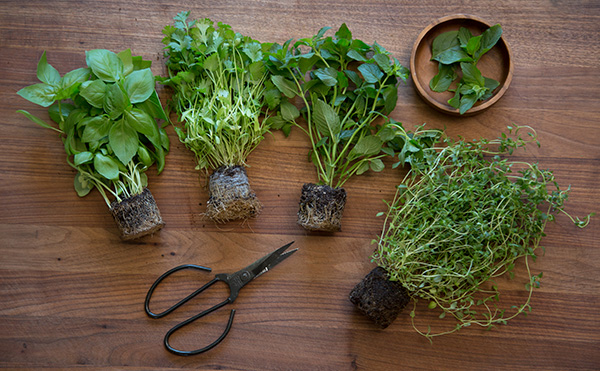
Sustainability is key
This sophisticated greenhouse operation is located in the Riverside County community of Thermal. The company leans heavily on sustainable practices ranging from solar power to reused water to geothermal energy; it is recognized as a sustainable grower for its earth- and employee-friendly practices, such as awarding scholarships to the children and grandchildren of employees.
Much of the unique greenhouse technology draws on Leo’s expertise and family background. Both of Leo’s grand-fathers owned greenhouse operations in Holland; his father brought that knowledge to the United States when the family immigrated in the 1960s. The company founded by Leo’s father, Hollandia Flowers, became Hollandia Produce and was later taken over by Leo’s brother, Pete, who introduced Pete’s Living Greens.
Suzette and Leo first met on the job at Hollandia Flowers. Suzette spotted Leo driving a tractor and decided she wanted to meet him. Sparks flew when they did and the couple married in 1984.
Back then, as the daughter of a dentist and dental hygienist, Suzette didn’t know much about greenhouses or farming. “Coming from that kind of area and then going into this business was extremely different and really cool,” she says. “The traditions and culture the Dutch have—I feel so blessed to know and be a part of it.”
The couple struck out on their own in the late 1980s with dreams of developing a family farm. They built a greenhouse and originally planned to plant roses—until they discovered it would cost six figures to buy the plants.
The Overgaags switched to hothouse cucumbers until they could save enough cash for roses. Cucumbers, however, proved to be a strong crop while a flood of imports softened the market for roses.
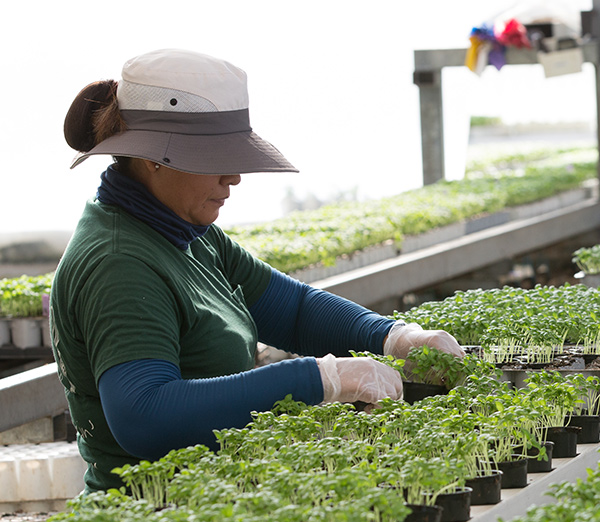
Pivot to living herbs
The couple grew cucumbers until imports also began to eat into that market. Around the mid-1990s, they decided to search for another crop—and that’s when Suzette had an epiphany about herbs.
“What the stores need is herbs that stay fresher longer,” she told Leo. “Then the consumer has time to use them.”
He embraced the idea and cleared greenhouse space for a small yearlong pilot. “I wanted to go through all four seasons to make sure we wouldn’t have any surprises when we started growing them,” Leo says.
Based on that success, the couple scaled up production to sell to retailers. The business continued to grow as Leo, a frequent visitor to Europe, harnessed and adapted the latest in greenhouse technology for use in the company.
They built the first greenhouse specifically for herbs in 1999, and cucumbers were fully retired about a decade ago. In addition to Bubb, the Overgaags’ other children—Ashley and Tony—also work at least part-time for the company.
Today, most North Shore herbs are grown in two highly automated greenhouses powered in large part by solar panels and warmed on cool nights by geothermal energy. Beneficial insects such as ladybugs, rather than pesticides, are the soldiers in pest control. The Overgaags say such measures make sense both from a business and sustainability standpoint.
The company germinates plants from seed. In the two main greenhouses, seedlings are placed individually into 25-foot-long gutters that move along a mechanized system. The plants are touched only a few times by human hands.
Crops are grown hydroponically—in peat moss rather than soil—and use roughly 70% less water than field crops. Any leftover drops are recycled for use.
During the growth cycle, herbs are tended and slowly moved from one side of the greenhouse to the other—signaling they are ready for harvest. They are then packaged, sorted and prepared for shipment according to the day’s orders.
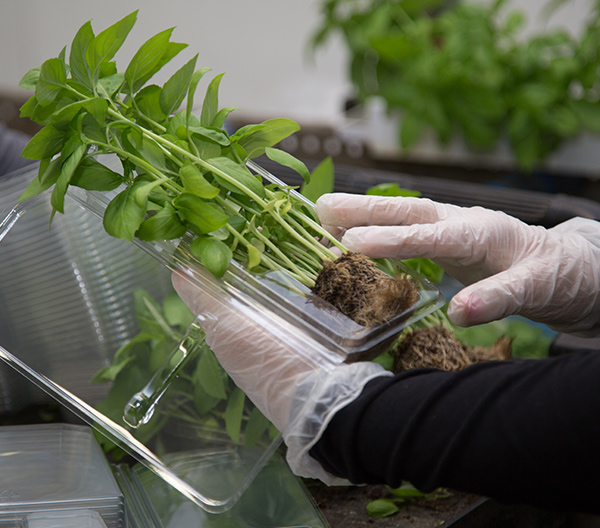
Cut vs. living herbs
The Overgaags say there is plenty of difference between cut and living herbs. “As soon as you cut the stems off the plant, you start a process where they start wilting, drying out, decaying,” Leo says.
While cut herbs may only stay fresh for a few days after purchase, living herbs can last an average of one to two weeks, the Overgaags say. That allows the consumer to use more, if not all of the product.
“You can use fresh herbs in your salad just like any green,” Suzette says. “There are so many easy things that you can do.”
That includes chopping and combining them with butter or adding herbs to vinegars, oils, cocktails or water. “There’s just so many different ways that you can use them,” she says. “We are trying to come up with some better ways of communicating that.”
Another bonus is that many herbs offer health benefits. For example, some herbs are loaded with antioxidants, help with digestion and are flavorful alternatives to extra salt, fat or sugar.
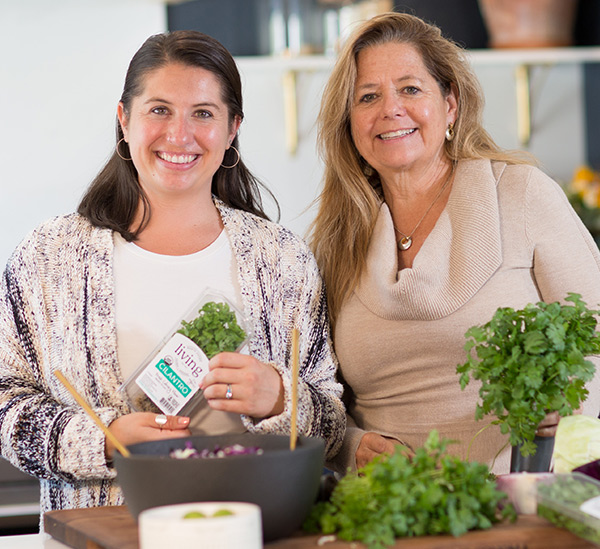
Basil is king
For the company, the most popular herb by far is basil followed by mint, rosemary, thyme, dill and chives. Those are the top sellers, but North Shore also produces herbs such as sorrel, tarragon, lemon basil and marjoram.
“We try to innovate all the time,” Suzette says. One new innovation is a product line called Counter Culture, a gift-worthy trio of different herbs packaged in a waterproof container. Customers can display the collection on the windowsill or counter, use what they need and even replace a spent plant with a new one.
The three varieties of herbs are generally timed to the season, Suzette says, and also reflect the company’s mindset.
“I really wanted this new product to be sustainable,” she says. “It will actually last a long time, but you can throw it away and it is recyclable. That’s really important to me. ... You want to be as good a steward as you can be in providing a product.”
Herbs help support a healthy lifestyle
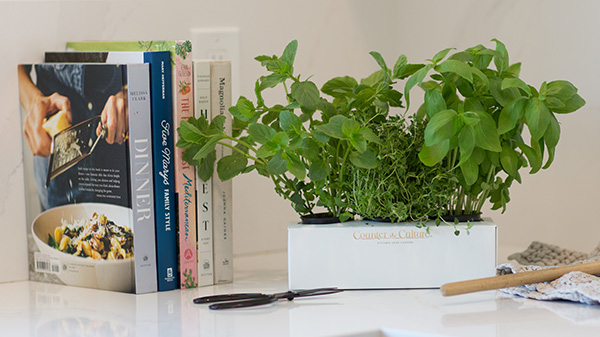
Fresh herbs are more than just tasty additions to food and drink.
These varied, often pint-sized wonders also pack a health punch that ranges from helpful antioxidant properties to digestive support, according to several dietitians.
“Many people associate antioxidant-rich foods with foods like blueberries, dark leafy greens and even chocolate,” says Tawnie Graham, registered dietitian nutritionist and president of Kroll’s Korner LLC. “But fresh herbs are also great sources of antioxidants and, of course, add flair and flavor to food. Basil, parsley and oregano, for instance, are antioxidant-containing herbs so you can pack in nutrition while garnishing and cooking with fresh herbs.”
Ashley Hawk, registered dietitian and wellness expert, routinely talks up the benefits of herbs.
“When making meal recommendations, I love to encourage my clients to ditch the excess salt and savor the health benefits that herbs bring to your plate,” says Hawk, who with Graham is co-author of California Bountiful’s “Good for You” column. “You can sprinkle in some antioxidant-rich oregano, add in the anti-inflammatory power of turmeric or the digestion-soothing magic of mint. From heart-healthy rosemary to brain-boosting sage, each herb is a tiny treasure trove of goodness.”
The list of health benefits is a long one and includes the antioxidant properties of herbs such as rosemary, thyme and basil. Antioxidants help protect cells from damaging “free radicals” and are associated with reducing the risk of chronic conditions such as heart disease and certain types of cancer.
“Adding fresh basil to a salad and rosemary on top of your sheet pan chicken and vegetable dish is an easy and effective way to boost flavor and get that extra serving of antioxidants,” Hawk says.
Some herbs have anti-inflammatory properties that help reduce inflammation while others help ease digestive discomfort, benefit heart health, support the immune system or potentially assist with regulating blood sugar levels.
Finally, herbs can be flavor bombs that support weight management. “Adding herbs to your meals can enhance the flavor of dishes without the need for excessive salt, sugar or unhealthy fats,” Hawk says. “This can be helpful for those looking to manage their weight by reducing calorie intake.”

